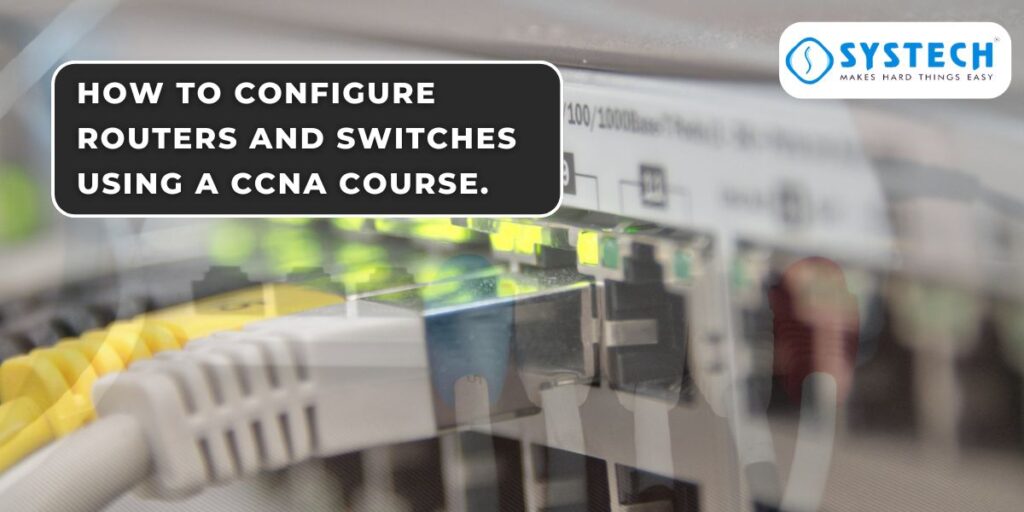Table of Contents
Comprehensive Guide to Router and Switch Configuration
Introduction
In today’s digital age, the efficiency and security of a network are paramount. This comprehensive guide aims to provide you with in-depth knowledge on how to configure routers and switches effectively. Proper configuration of these devices not only enhances network performance but also fortifies security measures against potential threats. Whether you are a network administrator, an IT professional, or a tech enthusiast, understanding the intricacies of router and switch configuration is essential for maintaining a robust network infrastructure.
Router and Switch Configuration Benefits
- Increasing Security: Proper configuration helps in safeguarding the network from unauthorized access and potential cyber threats.
- Changing Service Set Identifier (SSID): Customizing the SSID allows for better network identification, making it easier for users to connect to the correct network.
- Configuring Multi-SSID and Guest Wi-Fi: This feature enables user segmentation, allowing guests to access the internet without compromising the security of the main network.
- Enabling Remote Management: Remote management capabilities provide network administrators with visibility and control over connected devices, facilitating easier troubleshooting and maintenance.
- Optimizing Network Performance: Effective configuration can lead to improved data transfer rates and reduced latency, enhancing the overall user experience.
- Facilitating Network Scalability: A well-configured network can easily accommodate additional devices and users, making it adaptable to future growth.
What Is a Switch?
A switch is a fundamental component in networking that connects devices within a local area network (LAN). It operates at the data link layer (Layer 2) of the OSI model, forwarding data packets between devices based on their MAC addresses. Switches are essential for creating efficient and reliable networks, as they reduce collisions and improve bandwidth utilization.
Using a Router as a Network Switch
While routers and switches serve different purposes, a router can function as a switch in certain scenarios. However, it is essential to understand the capabilities and limitations of this setup. Routers typically manage traffic between different networks, while switches handle traffic within a single network. Using a router as a switch may lead to performance bottlenecks, especially in larger networks. Therefore, it is advisable to use dedicated switches for high-performance requirements.
How to Configure Router Settings
1. Accessing Your Router
To begin, you need to log into your router’s interface. This is typically done by entering the router’s IP address into a web browser. Common default IP addresses include 192.168.1.1 or 192.168.0.1. If you are unsure of your router’s IP address, consult the user manual or check the manufacturer’s website.
2. Changing Router Login Information
3. Changing Router IP Address
Modifying the default IP address of your router can help prevent unauthorized access. For example, changing it from 192.168.1.1 to 192.168.2.1 can add an extra layer of security. Ensure that the new IP address does not conflict with other devices on your network.
4. Changing SSID
To change the SSID, navigate to the wireless settings section of your router’s interface. Choose a unique name that reflects your network while avoiding personal information. A distinctive SSID can help users identify your network easily.
5. Configuring Guest Wi-Fi and Multi-SSID
Setting up a guest Wi-Fi network is crucial for user segmentation. This can be done by enabling the guest network feature in your router settings, allowing guests to connect without accessing the main network. Additionally, configuring multiple SSIDs can help manage different user groups effectively.
6. Activating Remote Management
Enabling remote management allows you to access your router’s settings from anywhere. This feature can be activated in the administration settings of your router. However, ensure that you use strong authentication methods to protect against unauthorized access.
7. Gaining Visibility of Who Is Connected
8. Changing Wireless Band and Channel
Optimizing performance involves selecting the right wireless band (2.4 GHz or 5 GHz) and channel. Use tools like Wi-Fi analyzers to determine the least congested channel for your network. This can help reduce interference and improve connection stability.
9. Setting Up Parental or Employee Controls
Implementing restrictions for specific users can be done through the parental controls feature in your router settings. This allows you to manage internet access for children or employees effectively. You can set time limits, block specific websites, or restrict access to certain content.
Switch and Router Configuration Management for Business
Benefits of Using Automated Tools
- Efficiency: Automated tools can quickly apply configurations across multiple devices, saving time and effort.
- Consistency: Ensures that all devices are configured uniformly, reducing the risk of misconfigurations that can lead to network issues.
- Time-Saving: Frees up IT staff to focus on more strategic tasks, such as network optimization and security enhancements.
Overview of Configuration Management Tools
- SolarWinds Network Configuration Manager: This tool provides comprehensive network configuration management, allowing for automated backups, compliance reporting, and change tracking. It helps network administrators maintain control over their configurations and ensures compliance with industry standards.
- Kiwi CatTools: A user-friendly tool that automates the backup and configuration of network devices, making it easier to manage changes and updates. It offers features such as scheduled backups and change notifications, enhancing overall network management.
- Cisco Prime Infrastructure: This tool offers a centralized management platform for Cisco devices, providing visibility into network performance and configuration. It allows for streamlined management of both wired and wireless networks.
- NetBrain: A dynamic network automation tool that provides real-time visibility and automation for network configurations. It helps in troubleshooting and optimizing network performance by visualizing network paths and dependencies.
Best Practices for Router and Switch Configuration
To ensure optimal performance and security, consider the following best practices when configuring routers and switches:
1. Regular Firmware Updates
Keep your router and switch firmware up to date to protect against vulnerabilities. Manufacturers frequently release updates that address security flaws and improve performance.
2. Implementing VLANs
Using Virtual Local Area Networks (VLANs) can enhance network security and performance by segmenting traffic. This helps in isolating sensitive data and reducing broadcast traffic.
3. Enabling Network Monitoring
Implement network monitoring tools to gain insights into network performance and detect anomalies. Monitoring can help identify potential issues before they escalate into significant problems.
4. Documenting Configuration Changes
Maintain detailed documentation of all configuration changes made to routers and switches. This practice aids in troubleshooting and provides a reference for future configurations.
5. Conducting Regular Security Audits
Perform regular security audits to assess the effectiveness of your network security measures. This includes reviewing access controls, monitoring for unauthorized devices, and ensuring compliance with security policies.
Conclusion
Related Courses
FAQs
What are the key differences between configuring a Cisco router and a Cisco switch?
- Routers operate at Layer 3 (Network layer) and require IP addressing to route traffic between networks. Configuration involves setting up interfaces, routing protocols (e.g., OSPF, EIGRP), and NAT.
- Switches operate at Layer 2 (Data Link layer) and primarily use MAC addresses to forward frames. Configuration includes VLANs, trunking, STP (Spanning Tree Protocol), and port security.
- Routers use routing tables, while switches use MAC address tables.
- Switch interfaces are layer 2 ports by default, while router interfaces require IP address assignment for communication.
How do you verify the configuration of a Cisco router and switch?
- For a router:
- show running-config – Displays current configuration.
- show ip route – Checks routing table.
- show interfaces – Verifies interface status and statistics.
- ping & traceroute – Tests connectivity.
- For a switch:
- show running-config – Displays configuration settings.
- show vlan brief – Verifies VLAN assignments.
- show interfaces status – Checks port status.
- show mac address-table – Displays learned MAC addresses.
What are the common issues faced during Cisco router and switch configuration?
- Router Issues:
- Incorrect IP addressing or subnetting.
- Misconfigured routing protocols.
- ACL (Access Control List) blocking traffic.
- NAT configuration errors.
- Switch Issues:
- VLAN misconfiguration leading to connectivity issues.
- Incorrect trunking settings (switchport mode trunk).
- Port security blocking devices.
- Spanning Tree Protocol (STP) blocking ports.
How do you troubleshoot connectivity issues between a Cisco router and switch?
- Check Physical Connectivity: Ensure cables are correctly connected and interfaces are up (show interfaces).
- Verify VLANs and Trunking: Confirm correct VLAN assignments (show vlan brief) and trunk status (show interfaces trunk).
- Check IP Configuration: Verify subnet masks and IP addresses on router and switch interfaces (show ip interface brief).
- Ping and Traceroute: Test reachability between devices (ping <IP> and traceroute <IP>).
- Examine Routing and ARP: Ensure proper routing (show ip route) and address resolution (show arp).
- Check ACLs and Security Features: Ensure access control lists or port security are not blocking traffic.
What are the best practices for securing a Cisco router and switch configuration?
- Use Strong Passwords: Secure console, SSH, and privileged EXEC mode with strong passwords (enable secret).
- Enable SSH Instead of Telnet: Use ip ssh version 2 for encrypted remote access.
- Apply Access Control Lists (ACLs): Restrict access to management interfaces.
- Disable Unused Services and Ports: Shut down unused interfaces (shutdown) and disable unnecessary services.
- Enable Logging and Monitoring: Use logging buffered and syslog for tracking changes and potential security threats.
- Implement Port Security: Restrict the number of MAC addresses on switch ports (switchport port-security).
- Use Secure Management Protocols: Implement SNMPv3 and disable SNMPv1/v2

